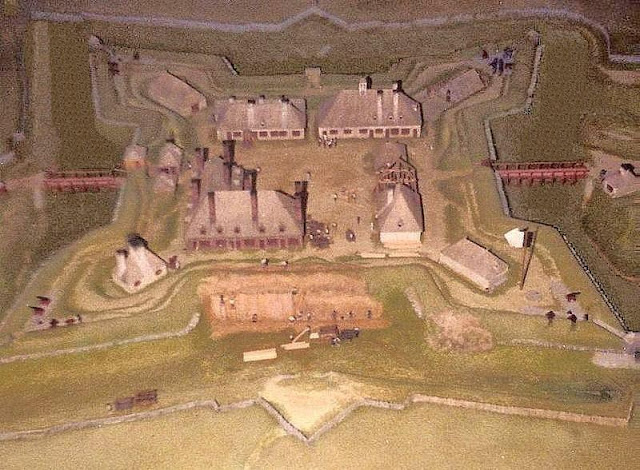At last today I was able to sit down for two hours and play this game through.
The previous days' bits and pieces of free time were not lost though as I sorted through the figures on hand and reviewed three years worth of late 19thC/early 20thC game reports on various grid sizes using various versions of the rules and various organizations. I also contemplated how various scenarios would work with each system and cross referenced all this with what I really want the games to feel like. The end result was to fall back on the organization of battalions composed of 4 stands each of 2 infantry which I selected back in the fall of 2014 because the originally planned 16 man battalions were more figures than I wanted to paint and more than I had room for. This organization got lost when I started trying to cram everything into smaller squares on a smaller table. There are other very viable options for the bigger squares and I considered some but the 4x2 was the one that I liked best and wanted to make work. So I did.
A rough quick reference version of the rules is available (
click) but I need to expand it to a full explanation of how my troops are organized and how things work as well as by adding all the extras such as field hospitals, boats and so on. Unlike earlier versions I am just going to lay out what I do but anyone who wishes to is free to borrow or adapt to suit themselves. The rules will be an example of my new 'sweet spot' a cross between a "serious" traditional historical wargame and playing with toy soldiers.
Now....
On with the game!
 |
| Early in the game. The Royal forces have seized the bridge and are attacking up the West Bank while the Republican forces are advancing cautiously. |
The game was essentially Blasthof Bridge, the introductory example wargame from Lawford & Young's Charge! or How to Play Wargames. The Red Queen of Faraway's army stood in for the Imperial army while the Republic of Oberhilse's army took the role of the Elector's force. I made no conscious attempt to follow the original plans or to program either side. The only change to the army lists apart from grouping the figures into 8 figure infantry battalions and 4 figure cavalry squadrons was to reduce the artillery to 1 gun aside. That was due as much to a shortage of artillery pieces for the late 19th Century as to a concern that the force was too small to warrant 2 batteries. The infantry were all armed with breechloaders, the cavalry all carried carbines for dismounted work as well as swords and lances.
Having a cavalry advantage, General Milne split his cavalry and rapidly seized both ends of the bridge and then concentrated on the West bank as soon as his infantry was up. He then split his infantry and set up a defensive line screened by a brief spoiling attack by part of his cavalry. His explanations of why he felt that move was necessary and whether or not he felt that the damage to his cavalry nearly lost him the battle have never been properly answered.
General Zinn began by sending a screening party of infantry over the river and concentrated the rest of his force for a push up the West bank. He soon found himself channeled by the steep hill which made it difficult to exploit his numbers. Once his cavalry and gun had thrown back the Royal cavalry and the battle began to settle into a desultory long range firefight, he decided to transfer half of his infantry to the other side to launch a coordinated assault up the East bank.
 |
| The Red Queen's men have been thrown back and only a bold advance by the last fresh squadron of lancers has plugged the gap. Across the river though, the Republican losses have been heavy and their last chance to seize the bridge will be a desperate assault by a battered battalion of the Blue Guard. |
On the East bank there was again a funnel, this time though the farm full of riflemen was more of a threat than the hill crowned by a squadron of dismounted cavalry had been. Every attempt to organize a concentrated attack was shot apart before it got started, a situation not helped by some timely chance cards in the enemy's favour. In the end he was forced to lead the last assault and risk all. For a minute the redcoats wavered and Colonel Marten was forced to risk the bullets to steady his men and bring up reserves. Across the river the slow dribble of casualties finally broke the back of the Queen's cavalry but the Republican cavalry was too badly shot up to take advantage of the situation.
It was now or never, the last attack went forward and was shattered, General Zinn rallied them but then the 4.7 shells came crashing in and both the Blue Guard and 7th Infantry fell below 1/2 strength while Red's infantry still had 2 fresh battalions. It was time to retreat.
 |
| Turn 12 and a despite General's Zinn personal intervention the Republican army is shattered and must withdraw leaving the Royal Army in possession of the bridge. |
This is the sort of game that these armies, and my WW1 and Colonial ones were designed to play and the sort that I was getting sorted when I decided that I had to shrink my table a year ago. I'm glad they're back. Now I can start work healing the damage done to the armies in my search for a smaller foot print and get ready for some winter campaigning, everything from a train ambush to a pitched battle are possible again.
c






















